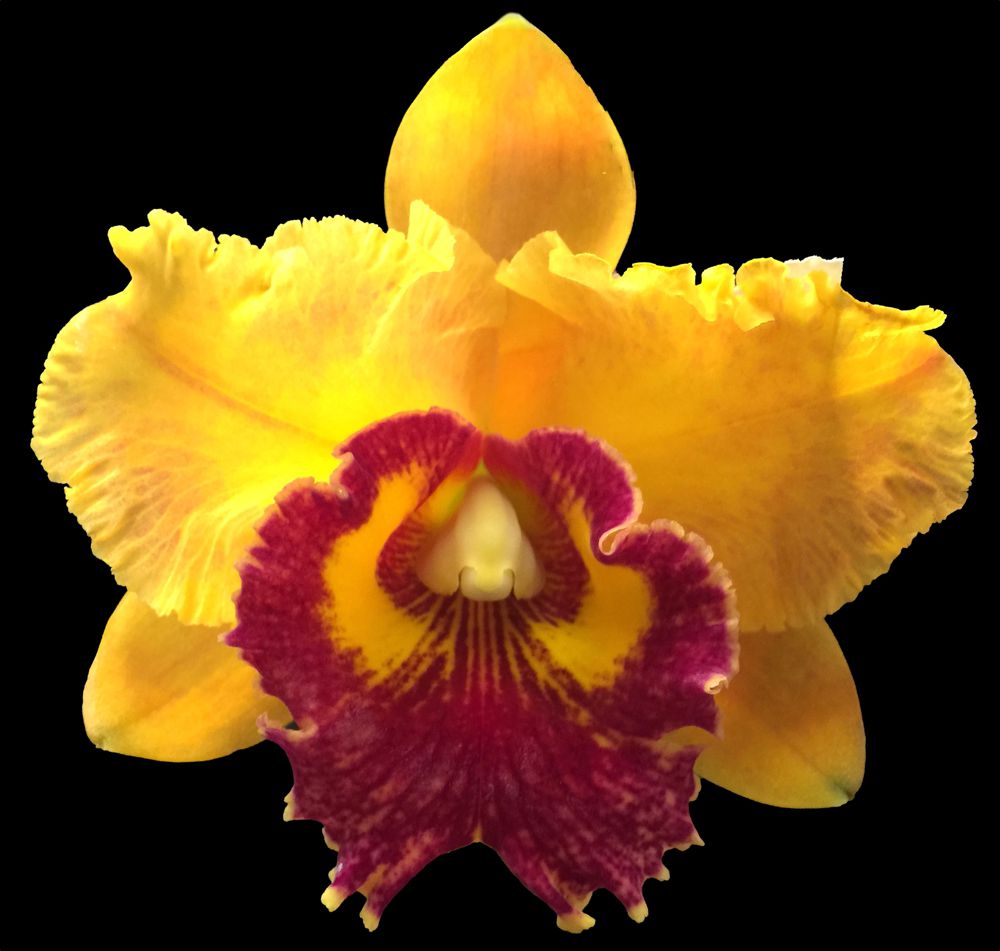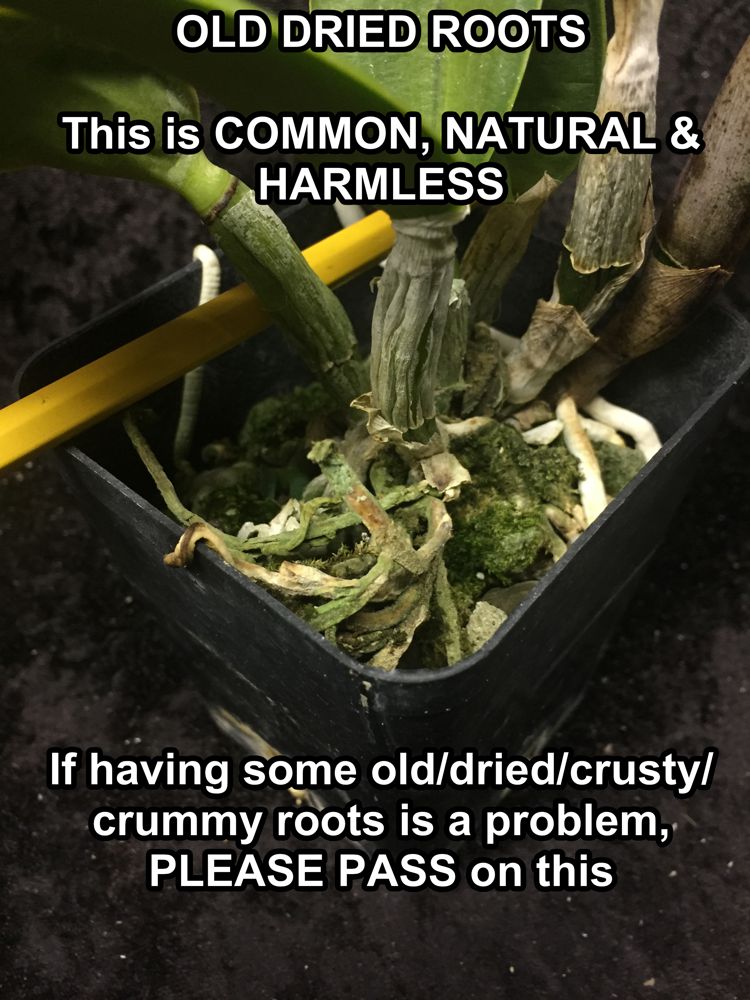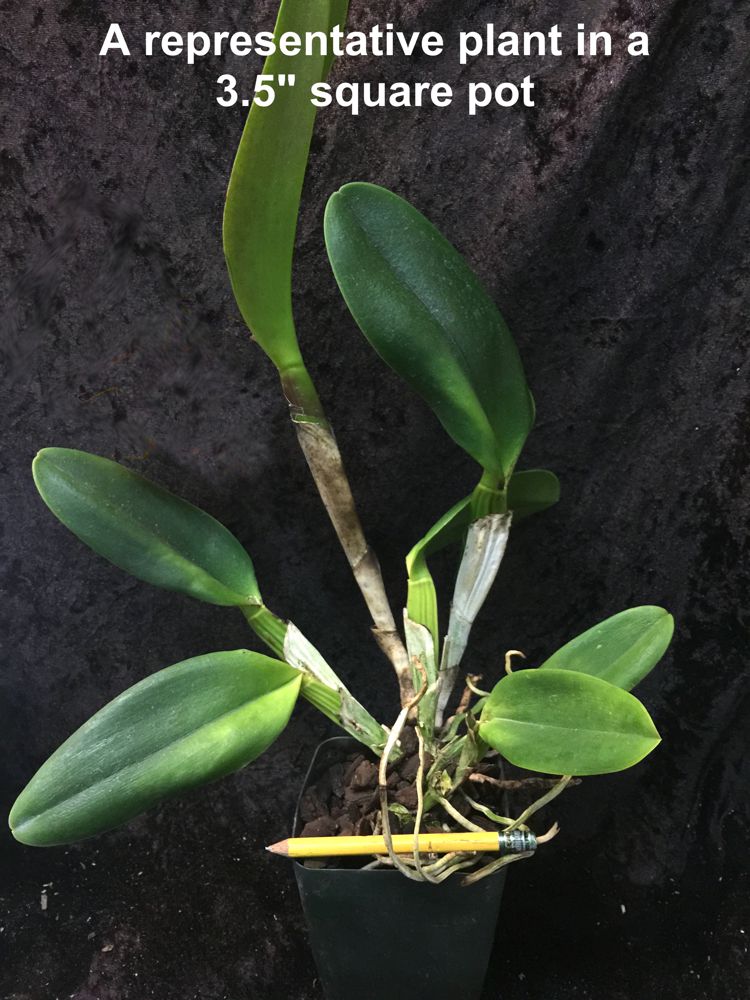Description
IMPORTANT NOTES:
***Please look at all the pictures carefully (and read the text in the photos) so you’ll know the sizes of the plants we’re offering in this listing.***
Plants are NOT in-bud/bloom when shipped.
Blooming Size Cattleyas often have OLD, DRIED-UP ROOTS. Happy Cattleyas produce roots prolifically, and eventually these roots wear out. They can then be trimmed off. BUT IF OLD/DRY/CRUSTY/GRAY/CRUMMY ROOTS are a problem for you or your recipient, PLEASE PASS ON THIS.
=============
FULL AND EXCITING DESCRIPTION
Although Cattleyas originate in Central and South America, Thailand may now be the center of the Cattleya universe, as a massive amount of breeding and production takes place there with its perfect climate for growing Cattleyas (and many other orchid types). Cattleyas are bred and cloned in mass quantities in Thailand, and it wouldn’t be at all surprising if there are actually more Cattleya plants in Thailand than in, say, Brazil. The orchid craze initially sparked by Cattleyas arriving in England in the 1820s continues to this day, with demand for these incredibly beautiful orchids driving a huge chunk of the commercial orchid industry in Thailand.
When breeding orchids, you can take the artisnal approach, or the shotgun approach. The artisanal approach relies on the breeder’s judgment, experience, and intuition to arrive at an envisioned final goal. This approach can produce something stunning, or a bunch of dogs, or sometimes both. Unfortunately, the drawback to the artisanal approach is the lack of production space available to most individual orchid breeders. The shotgun approach is one that a large-scale operation, like those in Thailand, can afford to take. Land is cheap, the perfect climate is free, and labor abundant. All you need to do is breed a bunch of parent plants, grow up the seedlings, and plant out thousands of plants. When you plant out a thousand or more of a cross, you vastly increase your chances of finding that superior specimen than if you are able to flower out a few dozen or maybe a hundred (which is usually the case with the artisanal breeders).
So when you come across an orchid with a Thai-sounding name (please not to be confused with something from Taiwan — that’s a whole different country that speaks a completely different language, but I’ve encountered many times people who have confused the two), you’re probably looking at something that was selected out of thousands of progeny for cloning. After all, if you’re going to clone something, you’re going to clone the very best, not just anything run of the mill, right?
How can you tell if something has a Thai name? Just look for the ‘k’ sound; stuff from Taiwan (where the official language is Chinese) doesn’t have nearly as many words with the ‘k’ sound, and word sounds never end in ‘k’.
The present orchid, Nakornchaisri Delight, with its beautiful balanced form and color, is a winner out of Thailand, probably selected out of thousands of other fine siblings to grace orchid collections all over the world. It will certainly amaze, impress, and delight!
Growing Cattleyas is very easy, as they are hardy plants (and have an amazing ability to bounce back from prolonged stressful conditions — yes, we’ve seen this happen MANY times).
How to grow Cattleyas:
1) Bright light (although avoid prolonged direct sun)
2) Water once to twice a week during the growing season; let dry between waterings
3) Use chunky bark for plenty of aeration at the roots (or grow them mounted)
4) Fertilize twice per month
5) Avoid temps below 50 F; temps into the 90s F or even over 100 F are tolerable if kept shady and well-watered
BY THE WAY: Blooming Size Cattleyas often have OLD, DRIED-UP ROOTS. Happy Cattleyas produce roots prolifically, and eventually these roots wear out. They can then be trimmed off. BUT IF OLD/DRY/CRUSTY/GRAY/CRUMMY ROOTS are a problem for you or your recipient, PLEASE PASS ON THIS.
=====
– NOTE: Blooming Size Cattleyas often have OLD, DRIED-UP ROOTS. Happy Cattleyas produce roots prolifically, and eventually these roots wear out. They can then be trimmed off. BUT IF OLD/DRY/CRUSTY/GRAY/CRUMMY ROOTS are a problem for you or your recipient, PLEASE PASS ON THIS.
= Plants are NOT in-bud/bloom when shipped. Blooming Size plants will be shipped BARE ROOT (no pot).
Blooming Size Cattleyas often have OLD, DRIED-UP ROOTS. Happy Cattleyas produce roots prolifically, and eventually these roots wear out. They can then be trimmed off. BUT IF OLD/DRY/CRUSTY/GRAY/CRUMMY ROOTS are a problem for you or your recipient, PLEASE PASS ON THIS. (Yes, this is the FIFTH TIME that this message about roots shows up in this listing. Why? Long experience doing this. You’d be shocked at how a newbie buyer will panic to us because their orchid roots don’t look like what they’ve imagined in their minds. Some immediately leave negative comments that only reflect lack of experience and ignorance, so we’ve found it helpful to repeat these caveats and warnings repeatedly in the listing. And despite repeating a message like this FIVE TIMES, it’s still not 100% effective…)




